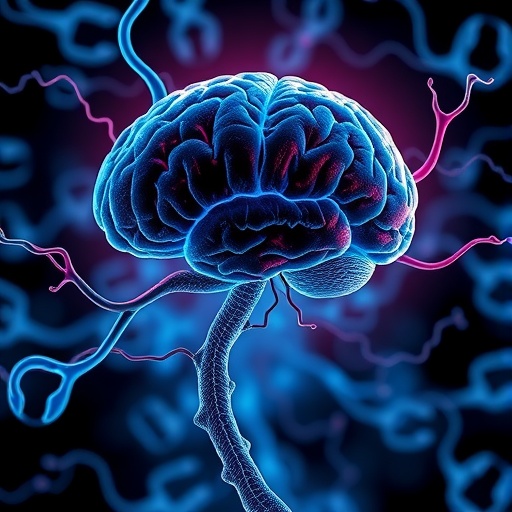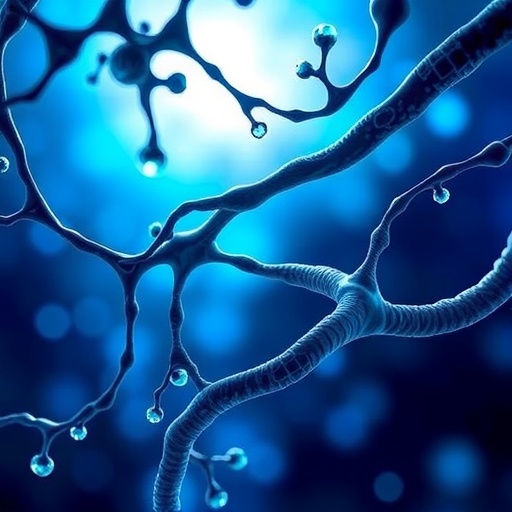In the ongoing quest to unlock the brain’s ability to rewire itself, a new frontier has emerged that could redefine the therapeutic landscape for psychiatric and neurodegenerative disorders. Nonhallucinogenic psychoplastogens, a class of compounds designed to promote neuronal growth and plasticity without triggering the hallucinogenic effects characteristic of classical psychedelics, are now at the center of scientific attention. A groundbreaking study published recently in Nature Neuroscience reveals that one such compound, tabernanthalog (TBG), ushers in a new mechanistic understanding of how neuroplasticity can be induced without the confounding psychedelic experiences traditionally linked to these effects.
Classic psychedelics, such as psilocybin and LSD, have been shown to promote structural and functional plasticity in the brain, offering hope for durable relief from depression, PTSD, and other refractory brain disorders. These compounds typically activate the serotonin 5-hydroxytryptamine 2A (5-HT₂A) receptor, inducing a cascade of molecular events that include immediate early gene (IEG) activation and transient bursts of glutamate neurotransmission within cortical circuits. These neurochemical phenomena were considered essential precursors to the long-term remodeling of synapses and dendritic spines that underlie neuroplasticity. However, their association with powerful hallucinogenic effects raised significant challenges for clinical translation and wide-scale therapeutic use.
The study led by Aarrestad et al. confronts these challenges head-on by investigating whether TBG, a novel psychoplastogen structurally related to ibogaine but modified to be nonhallucinogenic, can stimulate cortical neuroplasticity through pathways similar to those activated by classical psychedelics but without triggering the immediate neurochemical cascades previously thought indispensable. Employing a sophisticated set of pharmacological interventions combined with genetic tools in rodent models, the researchers provide compelling evidence that TBG enhances dendritic spine density and promotes synaptogenesis through engagement of the 5-HT₂A receptor. This activation sets off downstream signaling pathways involving TrkB, the receptor for brain-derived neurotrophic factor (BDNF), as well as the mammalian target of rapamycin (mTOR) and AMPA-type glutamate receptors, all pivotal regulators of synaptic growth and plasticity.
.adsslot_uwN73oKH1P{ width:728px !important; height:90px !important; }
@media (max-width:1199px) { .adsslot_uwN73oKH1P{ width:468px !important; height:60px !important; } }
@media (max-width:767px) { .adsslot_uwN73oKH1P{ width:320px !important; height:50px !important; } }
ADVERTISEMENT
Perhaps most strikingly, despite utilizing the canonical neuroplasticity pathway shared by classical psychedelics, TBG does not induce immediate bursts of glutamate or activate immediate early genes—transcriptional markers that have long been considered hallmarks and possibly prerequisites of psychedelic-induced neural remodeling. This dissociation between neuroplasticity and IEG activation challenges prevailing dogma and suggests that the brain can be coaxed into structural reorganization absent the overt neural excitation patterns linked to perceptual alterations. The implications for developing safer, scalable, and more widely acceptable therapeutics for mental health disorders are profound.
The authors meticulously mapped the temporal and spatial dynamics of TBG-induced cortical spinogenesis, using high-resolution imaging to demonstrate enhanced dendritic spine formation specifically in prefrontal cortical neurons. The prefrontal cortex is a key hub for executive function and emotional regulation, often disrupted in psychiatric illnesses. The enhancement of spinogenesis in this region was shown to be dependent on 5-HT₂A receptor signaling, as pharmacological blockade of this receptor abolished TBG’s effects. Further, genetic knockdown of TrkB similarly prevented the neuroplastic changes, underscoring the critical role of neurotrophic signaling downstream of serotonin receptor engagement.
Critically, the behavioral assays presented in the study link these cellular mechanisms to antidepressant-like effects in rodent models of chronic stress. TBG administration resulted in sustained improvements in behavioral paradigms reflective of mood and affect regulation, effects that were abrogated when cortical spinogenesis was pharmacologically inhibited. This finding firmly connects the promotion of cortical neuroplasticity by TBG with functional amelioration of depressive phenotypes, highlighting therapeutic relevance beyond molecular and cellular observations.
Contrasted with classical psychedelics, TBG’s lack of an immediate glutamate surge and IEG activation suggests a separation between the acute hallucinogenic or excitotoxic effects and the longer-term neuroplastic adaptations that underpin therapeutic benefits. This dissociation raises intriguing questions about the necessity of these immediate neurochemical events for clinical efficacy, potentially shifting the focus toward designing compounds that sidestep such side effects while preserving or even enhancing plasticity-promoting capacities.
The absence of IEG activation after TBG treatment also calls for a re-evaluation of the molecular signatures conventionally used to identify neuroplastic responses. Immediate early genes, such as c-Fos and Arc, have been widely exploited as markers of neuronal activation and plasticity, but this research suggests they may not be universally requisite or indicative of all forms of adaptive neural remodeling. Instead, more nuanced and context-dependent frameworks will be needed to catalog the molecular orchestration of plasticity.
From a therapeutic innovation perspective, the advent of nonhallucinogenic psychoplastogens represents a paradigm shift with ramifications far beyond clinical neurology and psychiatry. Compounds like TBG could pave the way for treatments that are more easily integrated into primary care settings, reduce stigma associated with psychedelic therapy, and mitigate regulatory hurdles linked to hallucinogenic properties. Moreover, the clearer mechanistic understanding elucidated by this work facilitates rational drug design strategies aimed at selectively targeting beneficial neuroplastic pathways without engaging side-effect-inducing circuits.
Looking forward, this research opens multiple avenues for further exploration. Determining whether other nonhallucinogenic psychoplastogens engage the same biochemical pathways, or if alternative circuits can be harnessed to promote neuroplasticity, remains an active area of investigation. Additionally, dissecting how the temporal dynamics of receptor activation and downstream signaling differ between classical psychedelics and TBG-like compounds could yield insights into optimizing dosing regimens to maximize efficacy and durability of therapeutic outcomes.
An important consideration will be the translatability of these findings to human clinical populations. While rodent cortical circuits share many conserved features with humans, the complexity of human neuropsychiatric disorders demands rigorous trials to assess safety, tolerability, and efficacy. The apparent decoupling of hallucinogenic side effects from plasticity induction offers a hopeful prospect for more acceptable treatments, but the nuances of human neurophysiology and subjective experience must be carefully evaluated.
Furthermore, the study provides a critical biochemical framework that might illuminate how certain pathologies characterized by impaired neuroplasticity could be ameliorated. Conditions such as major depressive disorder, post-traumatic stress disorder, and even neurodegenerative diseases like Alzheimer’s could potentially benefit from therapies that restore synaptic connectivity and plastic potential without inducing adverse neuropsychiatric symptoms.
Beyond therapeutic applications, the demonstration that neuroplasticity can be pharmacologically induced independently of immediate early gene activation raises fundamental questions about the cellular and molecular underpinnings of brain adaptability. It suggests there may be multiple molecular routes to achieve synaptic remodeling, each with distinct regulatory checkpoints and contextual dependencies. This realization could spur new experimental designs aimed at uncovering the diversity of plasticity mechanisms tailored to specific neuronal populations or brain states.
In summary, the findings by Aarrestad and colleagues mark a pivotal advance in our understanding of psychoplastogens and their mode of action. By demonstrating that TBG induces robust cortical neuroplasticity through 5-HT₂A-, TrkB-, mTOR-, and AMPA receptor-mediated pathways—yet without triggering immediate glutamate bursts or immediate early gene activation—the study challenges long-held assumptions about the neurobiology of psychedelics and opens promising doors for therapeutic innovation. The ability to achieve neuronal growth and synaptic remodeling without hallucinogenic effects could revolutionize how we approach the treatment of complex brain disorders, making neuroplasticity-based therapies safer, more scalable, and broadly accessible.
As neuroscience continues to unravel the intricate dance of receptors, signaling cascades, and gene expression that shape the brain’s plastic capacity, the distinction between neural excitation and structural adaptation becomes increasingly nuanced. TBG and related nonhallucinogenic psychoplastogens may well represent the vanguard of a new class of brain therapeutics that harness the power of plasticity in unprecedented, refined ways—potentially transforming mental health care and offering renewed hope to millions worldwide.
Subject of Research:
Neuroplasticity mechanisms induced by nonhallucinogenic psychoplastogens and their behavioral effects.
Article Title:
The psychoplastogen tabernanthalog induces neuroplasticity without proximate immediate early gene activation.
Article References:
Aarrestad, I.K., Cameron, L.P., Fenton, E.M. et al. The psychoplastogen tabernanthalog induces neuroplasticity without proximate immediate early gene activation. Nat Neurosci (2025). https://doi.org/10.1038/s41593-025-02021-1
Image Credits:
AI Generated
Tags: brain rewiring mechanismsclinical applications of tabernanthalogglutamate neurotransmissionimmediate early gene activationneurodegenerative disorder researchnonhallucinogenic psychoplastogenspsychiatric disorder treatmentsresearch in Nature Neuroscienceserotonin 5-HT₂A receptorstructural functional plasticitytabernanthalog neuroplasticitytherapeutic psychedelics





